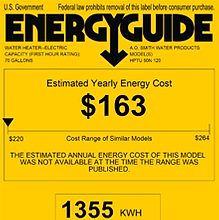Incentive Space
A contractor who is aware of the incentives to the consumer can sell better.

Water heating is on average the second largest household energy expense, accounting for nearly 20 percent of a home’s energy costs. Yet most people don’t even think about their water heater, let alone what it costs to operate it, until it breaks down. So how does a contractor make an energy-efficient product that costs more sound appealing to a homeowner in crisis mode?
As the result of new efficiency standards, water heaters under 55 gallons will see about a 4 percent boost in efficiency, while water heaters 55 gallons or more may cut utility bills by 25 to 50 percent depending on the technology used. But what does that even mean to a consumer?
 “The challenge is that homeowners aren’t aware of what they pay for water heating,” says David Chisolm, vice president of marketing, A. O. Smith.
“The challenge is that homeowners aren’t aware of what they pay for water heating,” says David Chisolm, vice president of marketing, A. O. Smith.
Consumers can easily do a little bit of research and find information on energy use. By now, most are familiar with the energy guide that appears on household appliances. “Water heaters have them too,” Chisolm says. "But for whatever reason, homeowners don’t really pay attention to that. They don’t make the association of what they pay every month in their utility bill,or how much of that is actually attributed to the water heater. When a contractor tries to sell a feature of an energy-efficient unit by telling the consumer they will save 40 percent, the consumer is left wondering, 40 percent of what?’”
So how are contractors using this information to sell?
“Try to talk in real terms,” Chisolm says. Tell them the actual cost savings in dollars, year over year, and over the lifespan of the product.” If a consumer spends more on upfront costs of a heat-pump water heater, for instance, explain that the energy efficiency of the product will save them about $400 a year and up to $5,000 over a 12-year lifespan of the water heater.
Explaining the cost-savings on its own isn’t the biggest barrier. Having to explain it to someone who is not expecting to make a large purchase that day is where the real challenge lies. Consumers don’t typically anticipate when their water heater will break down. So as a contractor, oftentimes you’re left dealing with someone who wants to get back into a hot shower as quickly, and as cost effectively, as possible.
 “The biggest barrier for energy efficiency adoption in the water heating space is the fact that it’s largely an urgent replacement where they weren’t planning on spending the money,” Chisolm says.
“The biggest barrier for energy efficiency adoption in the water heating space is the fact that it’s largely an urgent replacement where they weren’t planning on spending the money,” Chisolm says.
So let’s talk incentives
As a contractor, you know the challenges you’re facing; now you just need to know how to counter them.
Familiarize yourself with utility incentives. Utility companies are pushing lucrative rebates for homeowners to install more energy-efficient products. Most consumers look to the contractor as the expert, consultant or person who should have all the answers.
If you know that the consumer can get a $750 rebate for purchasing an energy-efficient product, then you’re already ahead of the game; you already know they can save money upfront with the rebate. Now you can sell them on features that will also provide year-over-year savings in energy costs.
“Relying on contractors to become aware of incentives, what it means to them in their local market and how to tell that story to homeowner — that’s a critical educational gap that exists today,” Chisolm says.
At the end of the day, knowing how to sell a more energy-efficient product means more money for you and a happier customer who will likely be a loyal customer because you’re providing a solution that is a better value than a standard product.
Familiarize yourself with features and learn to speak the consumer’s language. Telling a homeowner that a water heater is 50 gallons and has a 2.3 EF doesn’t really mean much to them. But you’ll get them to listen by explaining that an energy-efficient water heater will cost $163 a year to run vs. $555 for a standard product. “They understand that this makes sense,” Chisolm says.
They also will understand real-world performance comparisons —like a standard unit will provide a 26-minute shower, whereas a large capacity high efficiency unit will provide a 55-minute shower.
A.O. Smith has developed a sizing app called Xpert. “We provide tools to the contractor to be able to make that sale,” Chisolm says. “We’re trying to put performance attributes and other things that consumers can understand in our sizing tools so that when a contractor goes in s/he doesn’t have to ask, ‘Hey are you looking for a 50 gallon, 40,000 BTU water heater?’ What s/he will now ask is ‘How long of a shower do you take in your home? How many showers back-to-back do you take in your home? Do you have a body spray system or anything that uses a lot of hot water in your home? What is your fuel source?’” The output of the tool (also available online) is a customized product recommendation based on that particular household’s needs.
Get to know the needs of your customer and make recommendations based off them.
Understand the technology; it’s smart. Water heating use to be very simple. It was either you want a tank or you want a tankless and it was binary. Now, the consumer has a multitude of options in not only the type of water heater, but also the technology within it.
Consumers today buy products that offer ease-of-use functionality, keeps them connected and alerted, and that they can easily understand. If a customer says I want a specific product because I want this functionality or this connected capability, do you know how to talk to them about those features, and the value it provides to them?
The technology out there is really intriguing, and consumers love the idea of being connected and in control of their products. But even with all the bells and whistles that some products offer, if there isn’t enough value for the homeowner to stay engaged with that product, then what’s the point?
Chisolm says that though the water heater is used every single day, it is one of the most undervalued and underappreciated appliances in the home. Out of sight, out of mind.
“You’re not actually interacting with your water heater so offering a connected water heater might be a difficult proposition to say a consumer would be willing and interested to pay for controlling a device that they have no interest in engaging and interacting with,” he says.
In this situation, the contractor benefits by becoming more aware of what technology options are out there and what value they offer a homeowner.
Specifically in the water heater space, connectivity could be anything from alerts and notifications should anything go wrong with the water heater to remote control options for temperature control. Connectivity for water heaters is more in line with self-diagnostic type of capabilities. “It provides value from a serviceability standpoint,” Chisolm says.
Closing the sale. A final tool that has helped many contractors close more sales for these energy-efficient options is consumer financing. Whether you explore it on your own or partner with an industry service provider, giving your consumers more options to pay for these efficient products will help overcome the initial barrier of that up-front expense — particularly in an emergency replacement situation. Coupled with local utility rebates to close the gap of the up-front cost, this is truly a winning combination for contractors in their selling efforts.
Ultimately, the more you know, the better you can sell. As of June 12, 2017, all water heaters will need to have an energy guide displayed, and you should know what that means for your customer.





